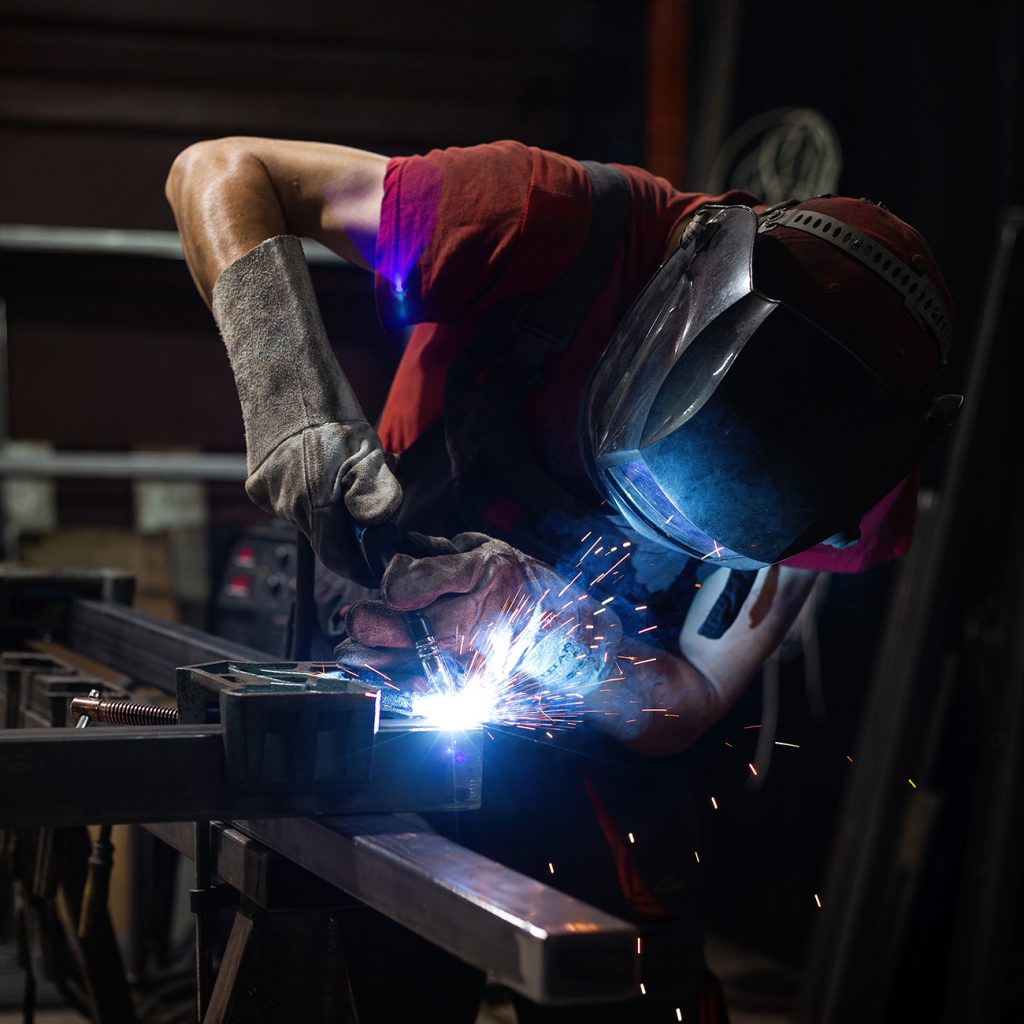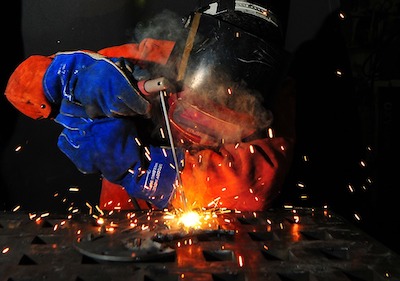Ways to minimize distortion in Montana Mobile Welding and Repair Welding projects
Everything about Welding: Secret Insights Into Techniques and Ideal Practices for Success
Welding incorporates a range of methods, each suited for details products and applications. Comprehending these approaches, such as GMAW, SMAW, and TIG, is important for attaining excellent results. The appropriate tools and security methods can not be overlooked. As preparation and fixing play critical roles in the welding process, grasping these components can substantially boost the high quality of the end product. What are the essential elements that ensure a successful weld?
Recognizing Various Welding Strategies
Welding strategies incorporate a variety of methods, each matched to particular applications and materials. Among one of the most typical techniques are Gas Metal Arc Welding (GMAW), Secured Metal Arc Welding (SMAW), and Tungsten Inert Gas Welding (TIG) GMAW, additionally called MIG welding, is preferred for its rate and convenience, making it perfect for thin products. SMAW, or stick welding, is preferred for its simplicity and efficiency in exterior settings, especially with thicker steels. TIG welding provides accuracy and control, making it appropriate for intricate work and non-ferrous steels (Montana Mobile Welding and Repair Welding). Each technique has its unique benefits and considerations, enabling welders to pick the best technique based upon the task's needs, product kind, and desired results. Understanding these strategies is important for effective welding
Necessary Welding Equipment and Devices
While various welding methods require particular abilities, the appropriate devices and devices are similarly essential for attaining high quality outcomes. Essential welding devices consists of welding equipments, which vary relying on the technique-- such as MIG, TIG, or stick welding. Protective equipment, including helmets, handwear covers, and aprons, guarantees security and convenience during the process. Additionally, clamps and components aid secure products in location, making certain accuracy in welds. Consumables like welding poles, cord, and shielding gas are additionally vital elements that influence the high quality of the weld. Furthermore, tools such as mills and cutters assist in surface area preparation and post-weld completing, adding to a specialist end result. Buying premium devices eventually enhances the effectiveness and effectiveness of welding jobs.
Safety And Security Practices in Welding
Proper safety and security techniques are crucial in the welding industry to protect workers from potential dangers. Welders should wear proper personal safety tools (PPE), consisting of helmets with appropriate shading, gloves, and flame-resistant garments. Ample air flow is important to lower exposure to damaging fumes and gases produced throughout the welding process. In addition, workers need to be trained in the correct handling of welding tools to stop mishaps. Fire safety procedures, such as keeping combustible materials far from the welding location and having fire extinguishers readily available, are necessary. Normal inspections of equipment and work spaces can assist determine potential risks prior to they cause crashes. By adhering to these safety methods, welders can develop a more secure working setting and reduce risks associated with their profession.
Preparing Materials for Welding
Preparing products for welding is a vital action that greatly influences the quality and honesty of the end product (Montana Mobile Welding and Repair Belgrade Welding). Proper preparation includes cleaning up the surfaces to remove contaminants such as dust, oil, and rust, which can compromise the weld. Strategies such as grinding, sanding, or utilizing solvents are frequently used to achieve a clean surface area. Furthermore, making sure that the products fit together well is important; voids can cause weak welds. It's also essential to take into consideration the placement and positioning of the components, as this will certainly affect the ease of welding and the final outcome. Picking the appropriate filler product and making sure compatibility with the base metals is necessary for attaining strong, sturdy welds.
Tips for Achieving High-Quality Welds
Attaining high-grade welds requires focus to detail and adherence to best methods throughout the welding procedure. Appropriate joint preparation is vital, ensuring surface areas are tidy and complimentary from pollutants. Picking the suitable filler product and welding technique based on the base metals is critical for optimal bonding. Preserving consistent travel rate and angle while welding can prevent problems and advertise harmony. Furthermore, regulating warm input is vital; too much warm can result in bending and damaged joints. If required, consistently inspecting the welds throughout the process permits for immediate changes. Employing proper post-weld treatments, such as cleansing and tension relief, can boost the durability and integrity of the weld, inevitably making certain a successful result.
Fixing Common Welding Issues
Welding frequently presents difficulties that can affect the quality and stability of the end product. Common issues such as porosity, irregular weld beads, and getting too hot can arise, each requiring specific troubleshooting techniques. Recognizing these troubles is vital for welders to enhance their skills and achieve excellent results.
Porosity Problems Discussed
Although porosity can usually be ignored, it remains a critical issue in welding that can compromise the stability of an ended up product. Porosity refers to the existence of tiny gas pockets within the weld bead, which can compromise the joint and lead to premature have a peek at this website failing. This problem usually develops from impurities, moisture, or incorrect shielding gas protection throughout the welding process. To reduce porosity, welders should verify that the base products are tidy and completely dry, use proper protecting gases, and preserve regular welding specifications. Routinely examining the equipment and setting can likewise aid determine possible issues before they manifest in the weld. Resolving porosity properly is essential for accomplishing solid, long lasting welds that meet quality requirements.

Inconsistent Weld Beans
Irregular weld beads can significantly influence the top quality and toughness of a completed product. Different elements add to this concern, including incorrect traveling speed, incorrect amperage settings, and irregular electrode angles. When the welder moves too promptly, a grain might show up narrow and do not have infiltration, while relocating as well slowly can trigger too much build-up. Additionally, using the wrong amperage can lead to either undercutting or extreme spatter, both of which compromise weld integrity. The welder's strategy, such as inconsistent lantern movement, can likewise lead to unequal bead appearance. To alleviate these issues, welders need to concentrate on maintaining steady, controlled motions and making sure correct equipment setups to attain uniformity in their welds. Consistency is crucial to attaining strong and dependable welds.
Getting Too Hot and Bending Issues
Too much warmth during the welding process can result in considerable getting too hot and contorting problems, influencing the structural stability of the workpiece. These issues commonly materialize as distortion, which can endanger placement and fit-up, making additional assembly testing. Elements adding to overheating include the selection of welding criteria, such as voltage and travel speed, as well as the sort of material being bonded. To alleviate these issues, welders should keep regular travel rate and appropriate warmth input while keeping track of the work surface temperature level. Furthermore, pre-heating or post-weld warmth treatment can help minimize stress and anxieties triggered by fast air conditioning - Montana Mobile Welding and Repair Belgrade Welding. Normal evaluation and adherence to best techniques are crucial in avoiding getting too hot and making sure the longevity and reliability of bonded structures
Frequently Asked Questions
What Are the Career Opportunities in the Welding Sector?
The welding industry offers diverse job opportunities, including positions as welders, assessors, designers, and instructors. Specialists can work in production, building and construction, aerospace, and automotive markets, profiting from strong need and affordable salaries in various roles.
Just How Can I Improve My Welding Rate Without Compromising High Quality?
To enhance welding speed without sacrificing high quality, one should exercise efficient techniques, keep tools, click maximize settings, and improve hand-eye sychronisation. look these up Routine training and looking for comments can also substantially add to achieving faster, top quality welds.
What Accreditations Are Available for Welders?
Many accreditations exist for welders, including those from the American Welding Culture (AWS), the National Center for Construction Education And Learning and Research Study (NCCER), and different industry-specific companies. These credentials boost employability and demonstrate skill efficiency.
How Does Welding Influence the Features of Metals?
Welding influences the homes of steels by changing their microstructure, which can result in adjustments in firmness, ductility, and toughness. Warmth input and air conditioning prices throughout the process substantially affect these material attributes.
Can I Weld Dissimilar Metals Together?
